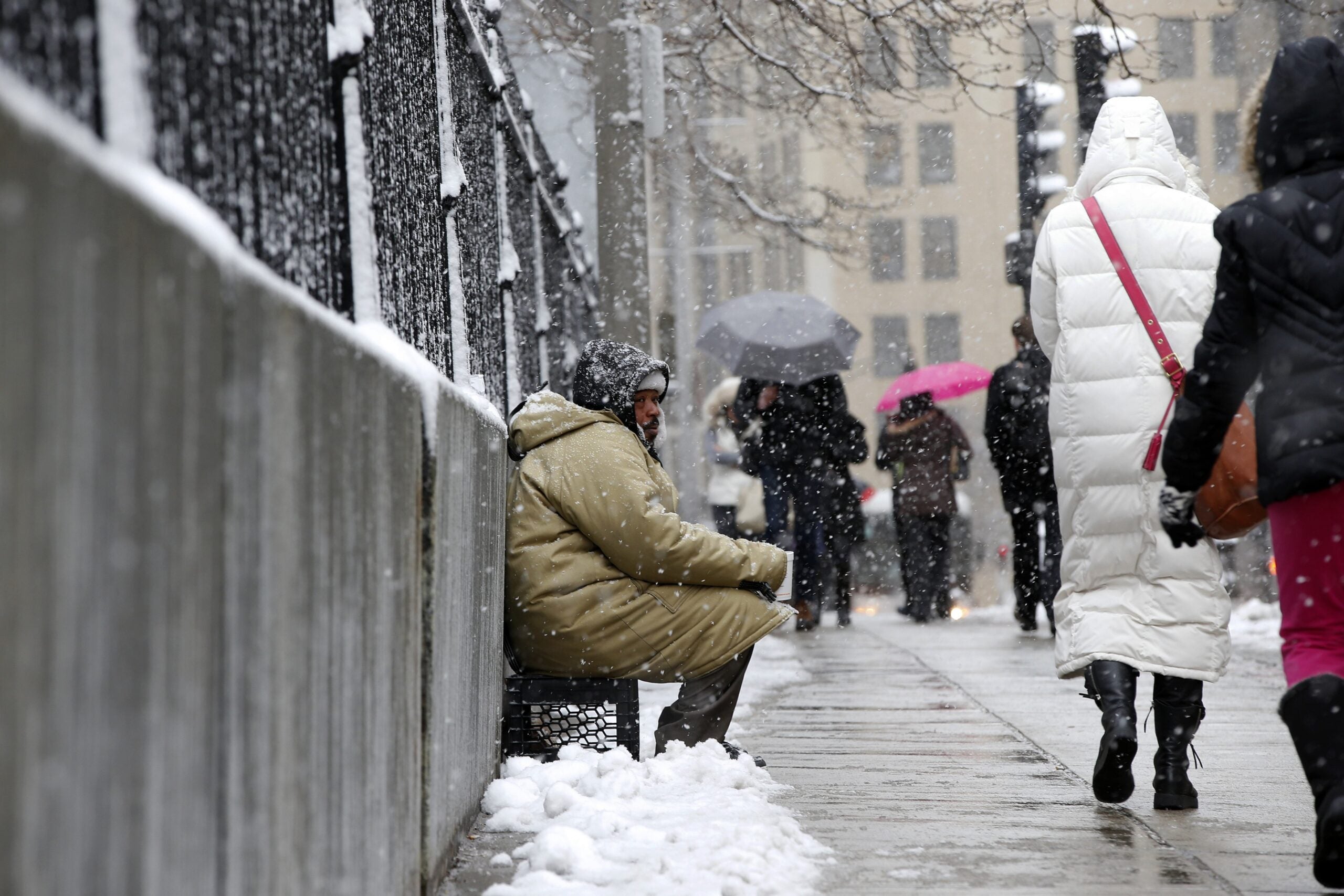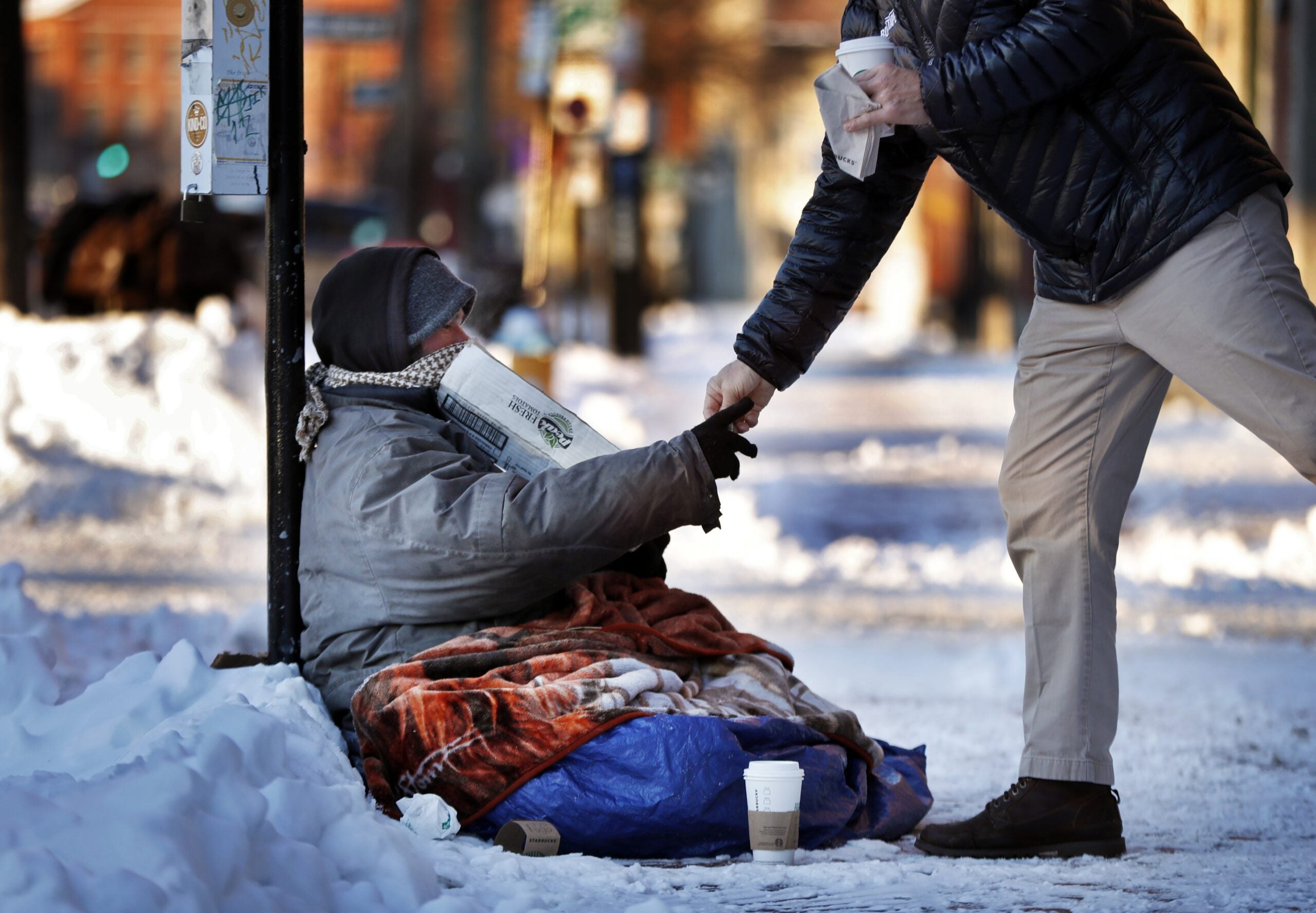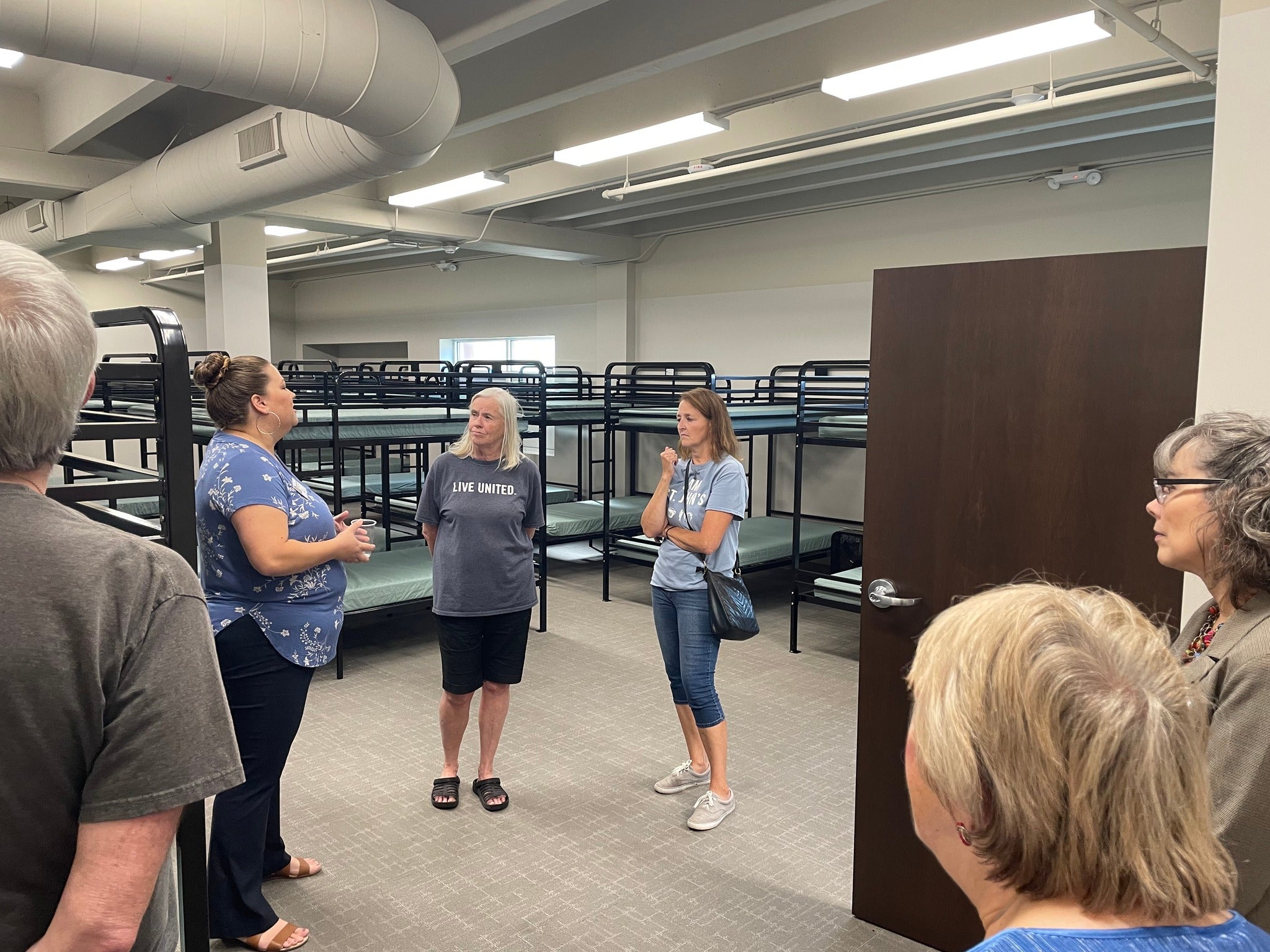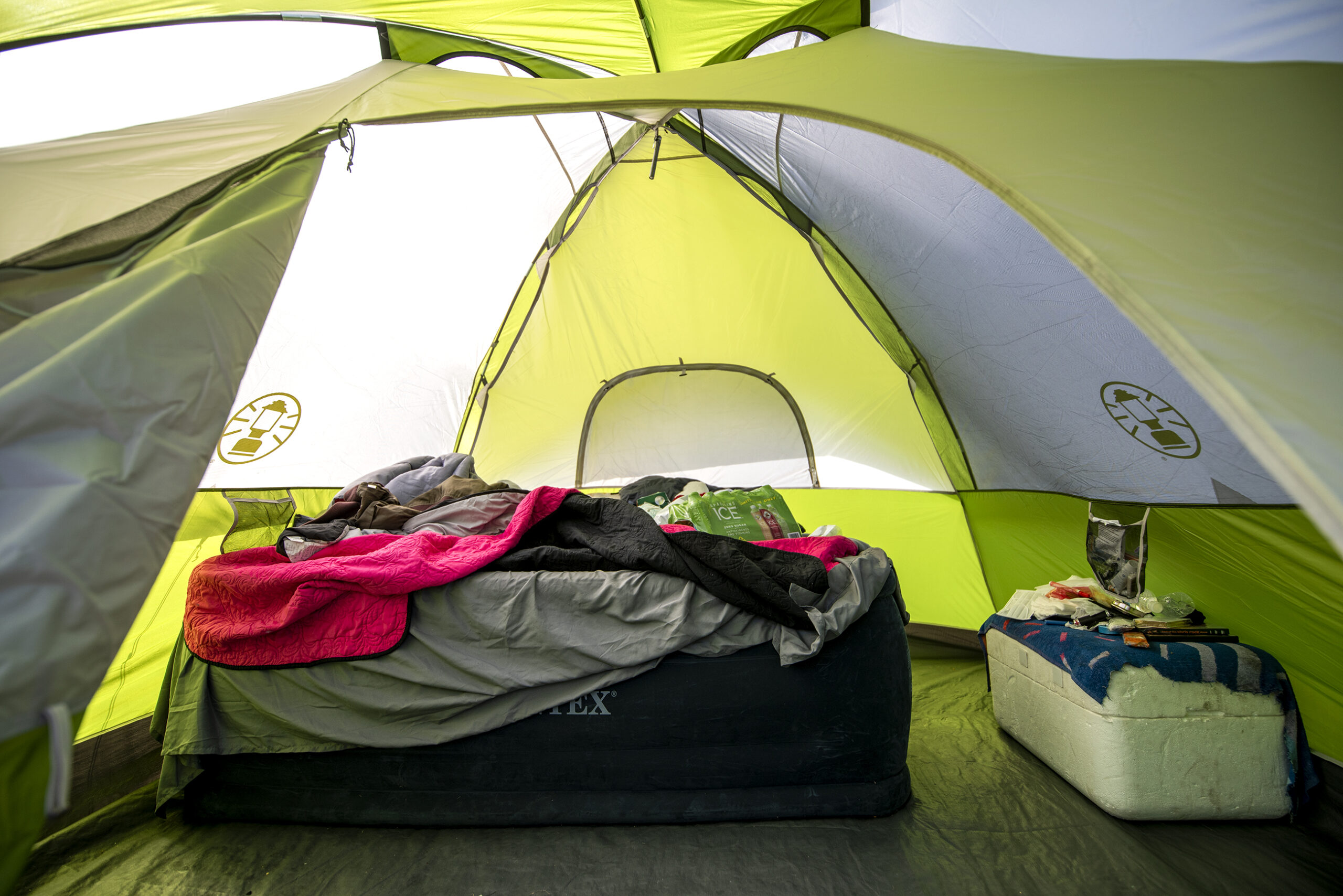With temperatures dipping well below zero in Wisconsin, some of the state’s busiest homeless shelters are reporting a spike in demand.
The Milwaukee Rescue Mission saw 189 men seek temporary shelter from the cold Tuesday night, but it’s not yet at capacity and can make room during the cold snap, said vice president of programs Dan Brown.
“We do see an influx of extra people when the weather gets really cold,” Brown said. “So, we have an additional, probably, 20 percent of homeless men that come in when it’s real cold.”
Stay informed on the latest news
Sign up for WPR’s email newsletter.
Madison homeless shelters run by the nonprofit Porchlight saw 140 men Monday, which is unusual said executive director Karla Thennes.
She said usually there’s a slight lull in demand during Christmas as individuals and families can sometimes find shelter with friends or family. Thennes said Porchlight’s high this season was 153 individuals who stayed at it’s main shelter and two overflow sites.
“You can’t be outside in this weather, you just can’t; and so, we have a policy in this kind of weather we don’t turn anybody away,” said Thennes. “If they’ve used up their time in a year or they’ve been banned, we don’t turn people away in this kind of weather. It’s just a safety issue.”
Overall, Brown said Milwaukee homeless shelters have seen a decline in demand, mostly due to a three-year effort to find transitional and permanent housing for homeless families and individuals.
Federal data show Wisconsin saw a 12 percent decline in the state’s homeless population from 2016, though most of that drop was attributable to the rehousing programs in Milwaukee and Madison. For the rest of the state outside of the City of Madison, and Milwaukee and Racine Counties, the homeless population declined by 3 percent.
The bitter cold is expected to last until the New Year. National Weather Service meteorologists have warned of sub-zero frigid arctic air and dangerously cold wind chills.
Wisconsin Public Radio, © Copyright 2024, Board of Regents of the University of Wisconsin System and Wisconsin Educational Communications Board.





